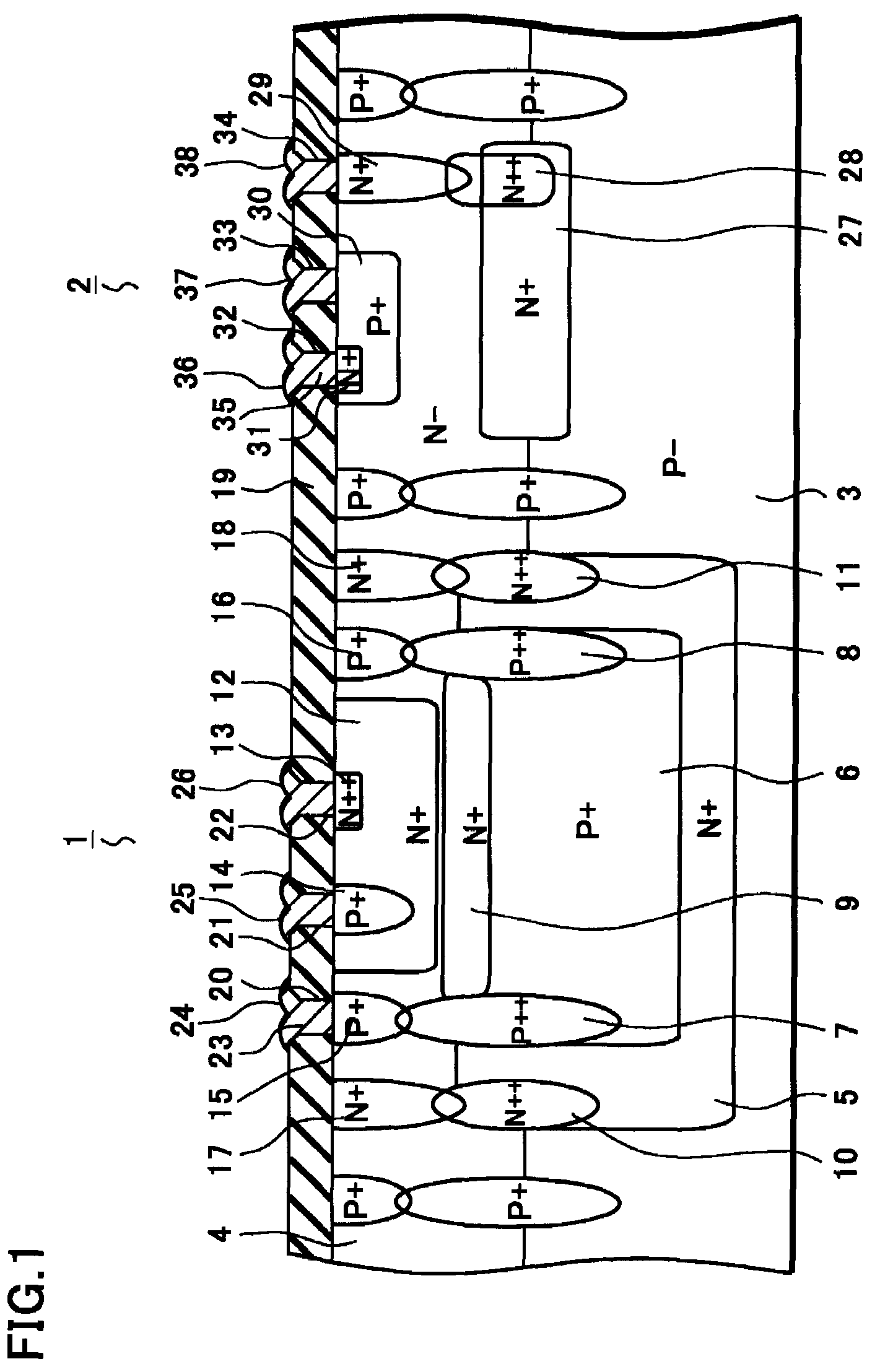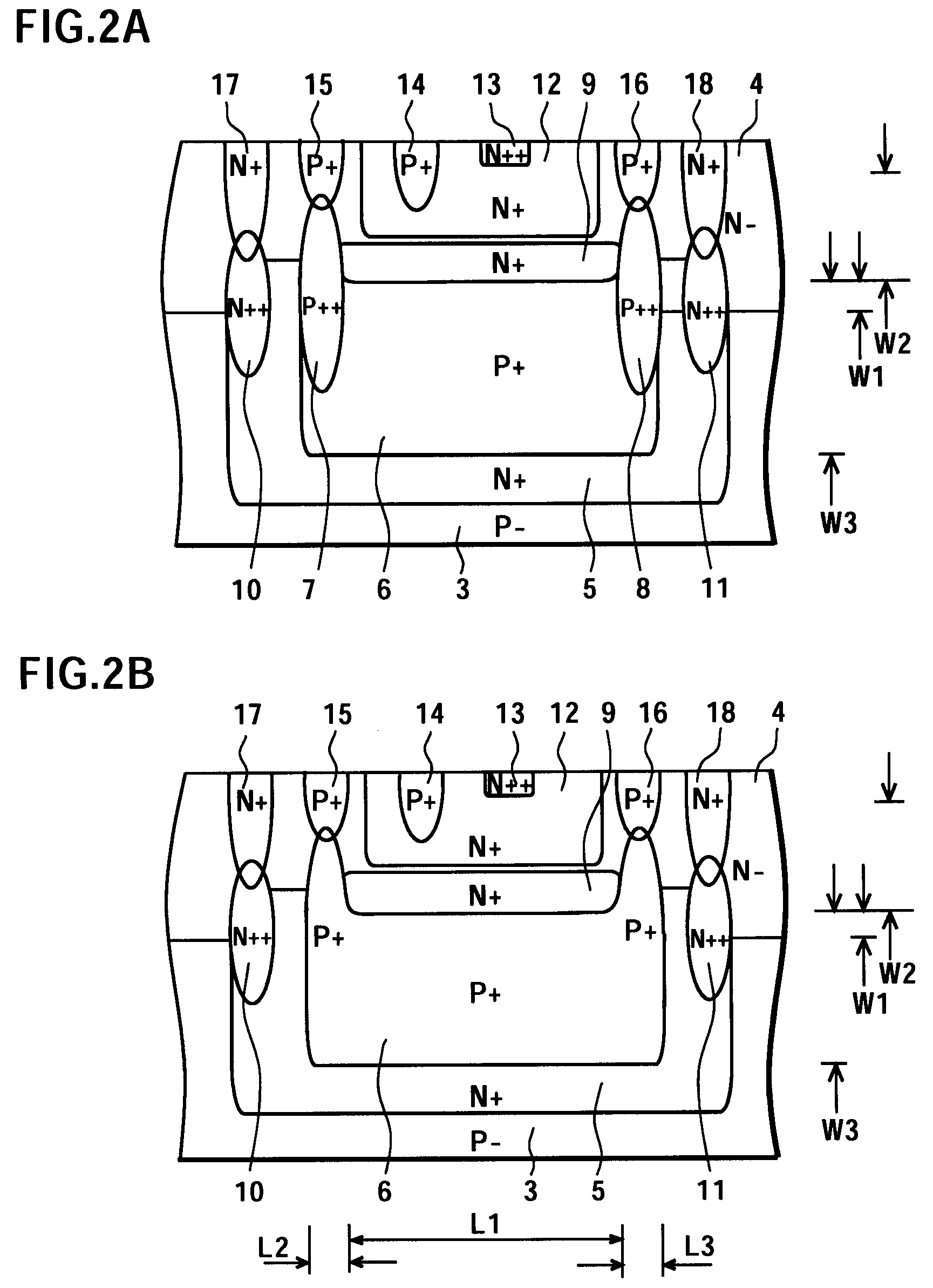Semiconductor device and method of manufacturing the same
a semiconductor and device technology, applied in semiconductor devices, transistors, electrical devices, etc., can solve the problems of reduced device size, difficult to partially check the upward expansion, and difficulty in reducing the size of the devi
- Summary
- Abstract
- Description
- Claims
- Application Information
AI Technical Summary
Benefits of technology
Problems solved by technology
Method used
Image
Examples
Embodiment Construction
[0030]An embodiment of a semiconductor device of the present invention is described below in detail with reference to FIGS. 1 to 3. FIG. 1 is a sectional view for describing a semiconductor device of the present embodiment. FIG. 2A is a sectional view for describing a vertical PNP transistor of the present embodiment. FIG. 2B is a sectional view for describing a vertical PNP transistor of the present embodiment. FIG. 3A is a graph for describing the sheet resistance value and the width of the upward expansion of a buried diffusion layer of the semiconductor device of the present embodiment. FIG. 3B is a graph for describing the breakdown voltage characteristics of the semiconductor device of the present embodiment.
[0031]As shown in FIG. 1, a vertical PNP transistor 1 and a vertical NPN transistor 2 are monolithically formed on a P type single crystal silicon substrate 3. For example, the vertical PNP transistor 1 is used as a power semiconductor element, and the vertical NPN transis...
PUM
 Login to View More
Login to View More Abstract
Description
Claims
Application Information
 Login to View More
Login to View More - R&D
- Intellectual Property
- Life Sciences
- Materials
- Tech Scout
- Unparalleled Data Quality
- Higher Quality Content
- 60% Fewer Hallucinations
Browse by: Latest US Patents, China's latest patents, Technical Efficacy Thesaurus, Application Domain, Technology Topic, Popular Technical Reports.
© 2025 PatSnap. All rights reserved.Legal|Privacy policy|Modern Slavery Act Transparency Statement|Sitemap|About US| Contact US: help@patsnap.com



